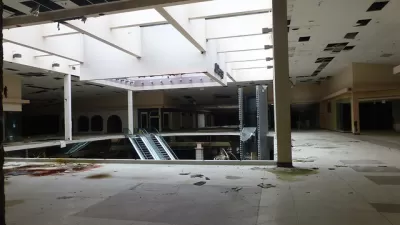As the structure of China’s urban shopping malls evolves into large-scale, multi-use “lifestyle complexes”, so too does their role in the social and cultural fabric of metropolitan society.
New shopping malls in nearly all of China’s first- and second-tier cities are developing a new identity as “lifestyle complexes,” offering not only retail and leisure opportunities, but a long list of services from childcare and hotels to art and educational venues, Gan Tian reports.
Competition from e-commerce, the author finds, has been a major factor in the diversification of these traditionally retail-focused complexes. As online shopping threatens traditional store-based retail channels across the globe, mall developers are looking for innovative ways to attract shoppers.
Already, these new urban “landmarks” are finding appeal across ages, occupations, and income groups. Alongside the allure of affordable cinema tickets and climate control, Tian finds a number of mall-goers for whom the center is an integral site – and source – of sociability.
From 28-year-old Xie Hong who eats brunch at Beijing’s Sanlitun Village every weekend with her friends because it reminds her of “Sex and the City” to retired worker Sun Jianguo who dislikes shopping malls but frequents the center to take walks with his wife, China’s new retail-leisure complexes offer a convenient space for social interaction. For others, the author finds, the mall is a primary source of social life. Tian encounters one mother who regularly brings her daughter to the Sanlitun Village because she has few other opportunities to play and interact with other children. “Under the family planning policy,” Tian argues, “most children do not have many playmates like before when children had brothers and sisters as companions.” In addition, he explains, the constricted spaces of high-rise apartment living offers little space to play at home.
Tian concludes that the new face of China’s shopping malls is engendering an important lifestyle shift among urban dwellers. “They are no longer just a place for shopping,” Tian writes. “They are turning into lifestyle complexes, where different people can meet their every need, almost.”
FULL STORY: Retail therapy

Planetizen Federal Action Tracker
A weekly monitor of how Trump’s orders and actions are impacting planners and planning in America.

Map: Where Senate Republicans Want to Sell Your Public Lands
For public land advocates, the Senate Republicans’ proposal to sell millions of acres of public land in the West is “the biggest fight of their careers.”

Restaurant Patios Were a Pandemic Win — Why Were They so Hard to Keep?
Social distancing requirements and changes in travel patterns prompted cities to pilot new uses for street and sidewalk space. Then it got complicated.

Platform Pilsner: Vancouver Transit Agency Releases... a Beer?
TransLink will receive a portion of every sale of the four-pack.

Toronto Weighs Cheaper Transit, Parking Hikes for Major Events
Special event rates would take effect during large festivals, sports games and concerts to ‘discourage driving, manage congestion and free up space for transit.”

Berlin to Consider Car-Free Zone Larger Than Manhattan
The area bound by the 22-mile Ringbahn would still allow 12 uses of a private automobile per year per person, and several other exemptions.
Urban Design for Planners 1: Software Tools
This six-course series explores essential urban design concepts using open source software and equips planners with the tools they need to participate fully in the urban design process.
Planning for Universal Design
Learn the tools for implementing Universal Design in planning regulations.
Heyer Gruel & Associates PA
JM Goldson LLC
Custer County Colorado
City of Camden Redevelopment Agency
City of Astoria
Transportation Research & Education Center (TREC) at Portland State University
Camden Redevelopment Agency
City of Claremont
Municipality of Princeton (NJ)





























